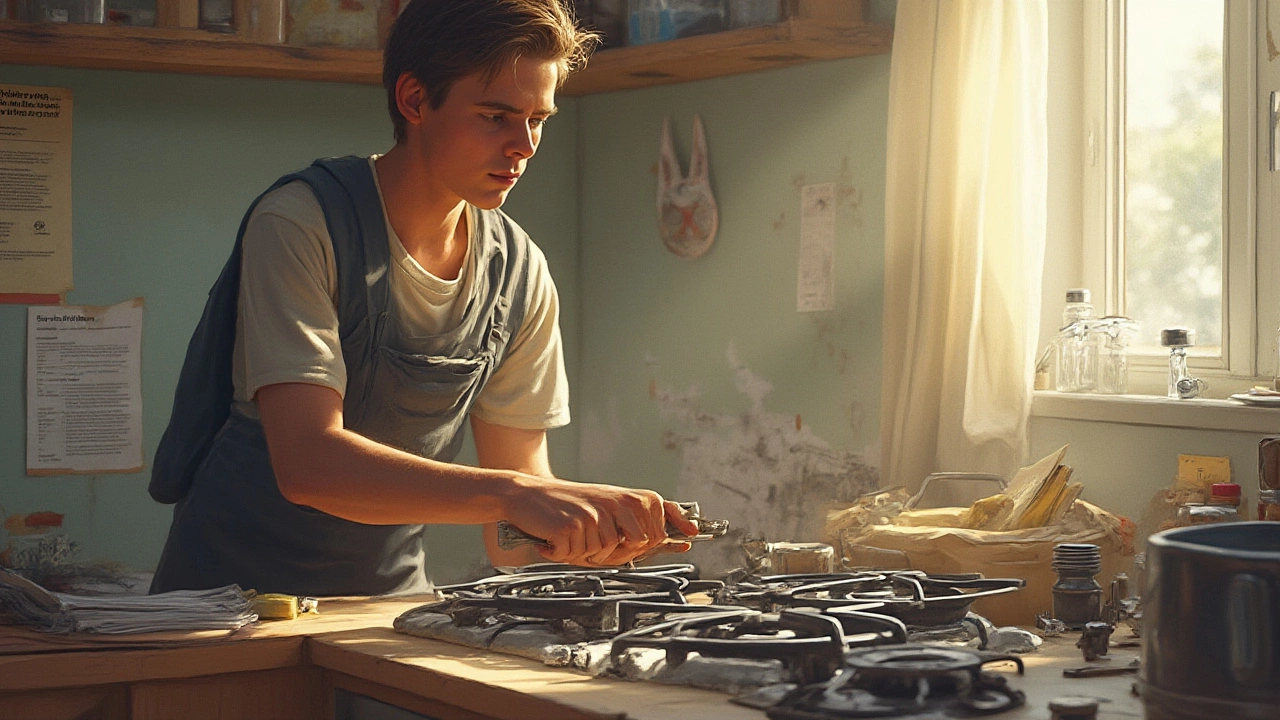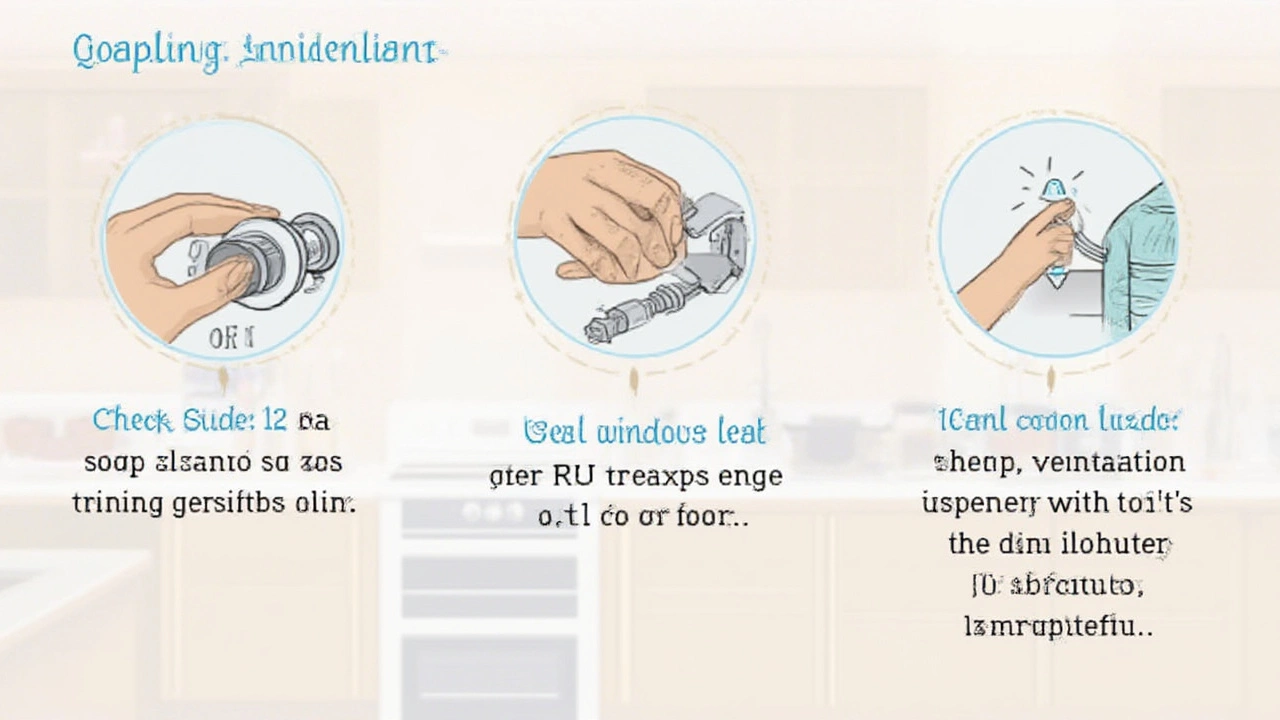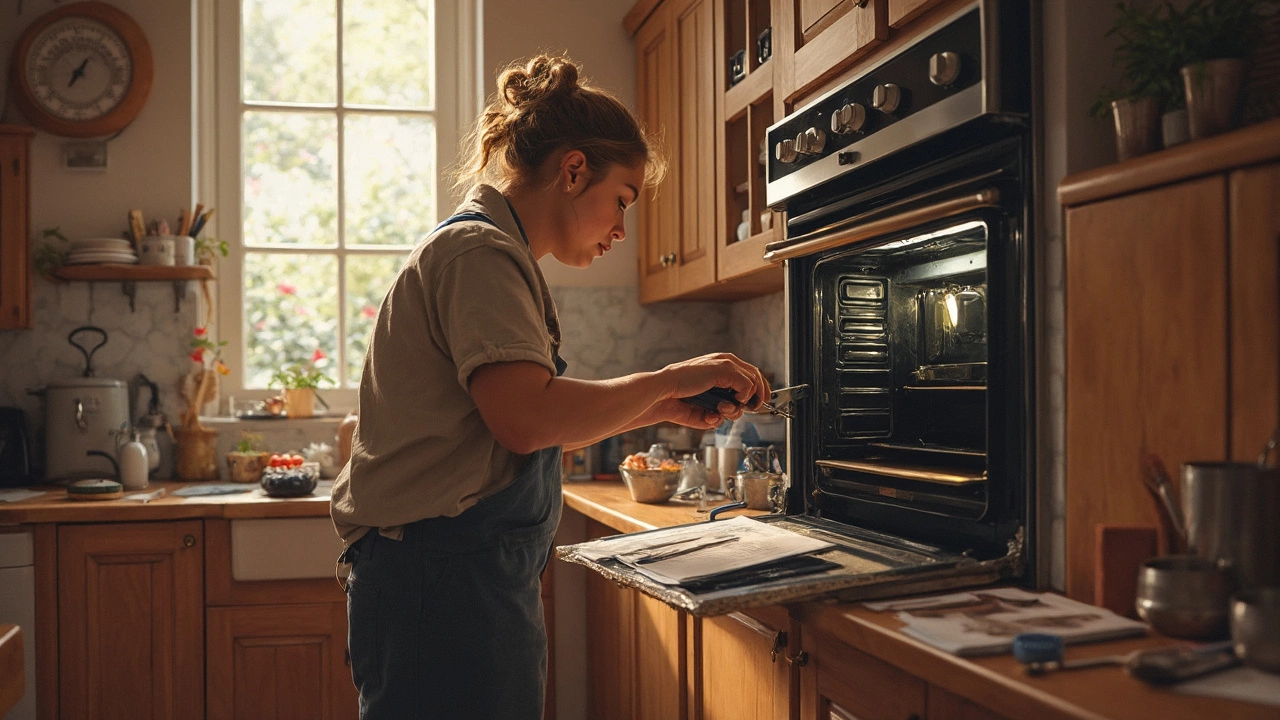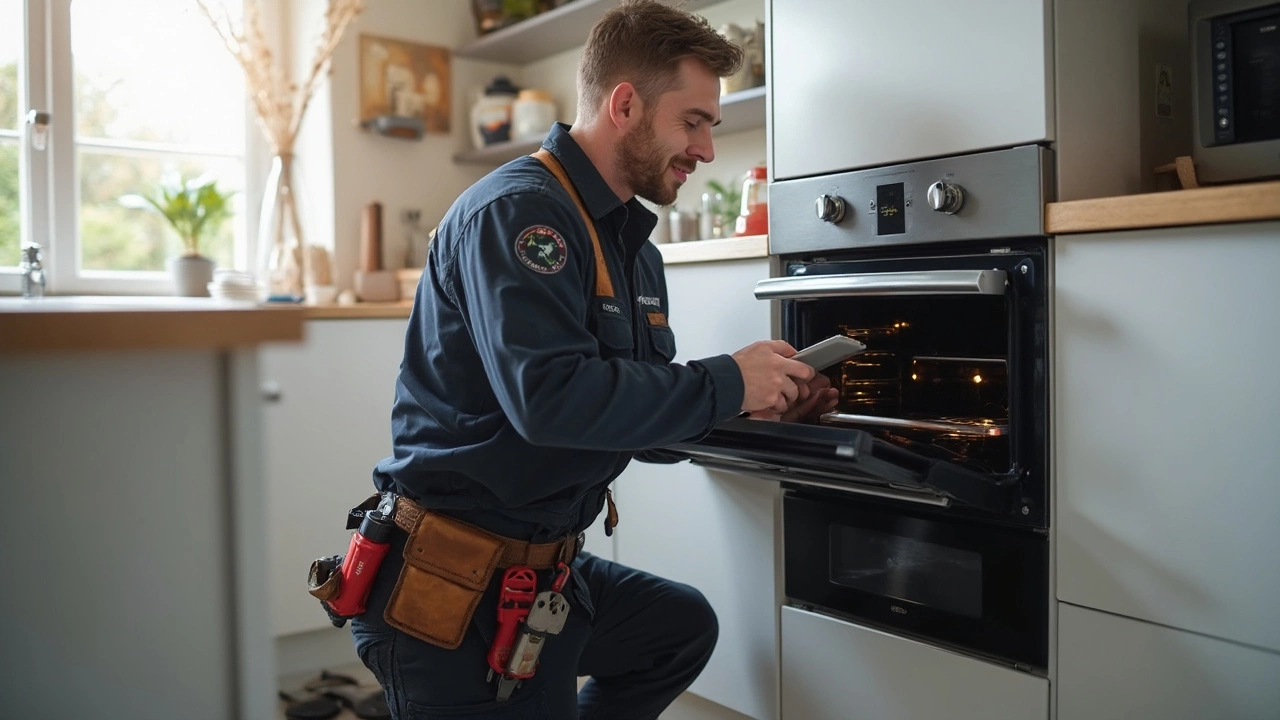
- 13 Jul 2025
- Gideon Thornton
- 0
Waking up to the smell of gas in your kitchen is enough to jolt anyone out of a sleepy haze. Or maybe your trusty gas hob has one random burner that just won’t ignite, no matter how hard you click. Most people panic when their gas hob starts acting up, thinking they’ll need a complete replacement. But let’s dig into the truth: can a gas hob be repaired, and if so, what’s worth fixing—and what isn’t?
Common Gas Hob Faults and What Causes Them
Gas hobs have been a kitchen staple for decades, mainly because they offer instant heat and precise control. But they’re not immune to problems. Most issues are classic: won’t ignite, uneven flame, clicking won’t stop, or it smells like a chemistry lab exploded.
Let’s break down a few common faults and what’s usually behind them:
- Burner won’t ignite: Often the culprit is a clogged burner cap, a dirty electrode, or simply a build-up of grease and food debris. If the spark works but there’s no flame, you might be dealing with a blocked jet or a gas delivery problem.
- Constant ticking noise: The igniter keeps clicking even when you’ve let go of the knob. That’s usually water spillage shorting the electrodes, or a worn-out ignition switch.
- Uneven or yellow flame: This usually means the burner ports are partially blocked, or the hob isn’t getting the right gas/air mix. Sometimes it’s just the wrong size cap on the wrong burner.
- Gas smell: This one’s serious and can be terrifying. Usually it comes from a loose connection, damaged hose, or failing valve. Any time you smell gas, open windows and call a Gas Safe registered pro. Don’t mess with it yourself.
- Weak flame or low heat: Check if the regulator is faulty, the jets are clogged, or if there’s low mains gas pressure. Sometimes dirty burners can make the flame weak too.
- Knobs stuck or broken: Years of spilled food and heavy handedness can make turning knobs a struggle. Sometimes it’s just gunk, but sometimes the valve spindles or the knobs themselves crack.
Knowing the usual suspects helps take some mystery (and fear) out of the issue. As for the causes, most times it’s simple wear and tear, poor maintenance, spills, or not cleaning enough. Ironically, trying to clean with too much water can also short the electrode or ignitor switches. A tiny bit of care goes a long way with gas hobs.
Here’s where things get interesting: In the UK, more than 80% of gas hob faults reported are fixable, according to the Gas Safe Register. But not all repairs are DIY territory. And knowing when to step back is the difference between a cheap fix and genuine danger.

When Can You Repair a Gas Hob Yourself?
If you’re even the slightest bit hands-on, a handful of gas hob issues are totally doable at home. Cleaning blocked burner caps or replacing a worn-out knob don’t require a call to the cavalry. With a set of screwdrivers, a brush, and a little soapy water, you can handle a fair bit.
- Burner Cleaning: If nothing happens when you turn the knob, pull off the burner cap and give everything a thorough clean with a non-abrasive brush. Grease loves to hide in these tiny gaps.
- Ignition Issues: For the endless clicking problem, make sure everything is bone dry. Water in the ignition mechanism causes endless headaches. Use paper towels and a hair dryer on a cool setting to open it up and dry the area gently.
- Blocked Jets: Toothpicks or a sewing needle (not a pin, too flimsy) can clear out the pinhole jets where the flame comes out. Just remember, never force anything or you’ll damage the brass part.
- Changing Knobs: Pull off the old one and slide on a new. If the spindle is stripped, you’ll need a replacement spindle from the manufacturer, usually ordered online for about a tenner. If the valve body is cracked, don’t mess around—this is a job for a pro.
The trickiest part is knowing your limit. If you open something up and smell gas, or if the ignition wires are burnt out, stop right there. Gas is no joke. Stay hands-off with anything related to gas supply pipes, valves, and regulators. UK law says only a Gas Safe registered engineer should handle gas connections. This isn’t just health and safety waffle—it’s legal.
If you like data, the Energy Saving Trust reports that over 70% of non-gas supply faults (like knob or burner cleaning) are fixed by the hob owners themselves within a day. But faulty valves, gas leaks, or broken ignition modules are almost always jobs for a proper registered technician.
Here’s a good rule of thumb: if it involves gas or electricity supply, call an expert. For everything else, try cleaning and replacing removable bits first. If that fails, then—yep—get someone in.

Professional Gas Hob Repairs: What to Expect
Some issues are definitely out of the DIY range, and that’s totally fine. When hob repairs involve sealed components, gas pipes, or electronic ignition modules, you want a pro. Let’s run down what the process usually looks like when you call in a specialist:
- Diagnosis: The engineer will visually check connections, seals, and test for leaks using detection sprays or a gas sniffer. UK rules require recording this in a safety log.
- Parts Sourcing: Most gas hobs use standard valves and ignition modules, but every make and model can be a little different. The technician will usually have the most common spare parts in their van. Sometimes, for less common brands (think Italian designer hobs), parts may take a few days to arrive.
- Repair: Swapping out ignition switches, fixing sticky valves, and resealing joints are bread-and-butter for qualified engineers. If the burner base or jet is cracked, they can replace that too. If the glass is shattered (yes, people drop pans all the time), some glass tops can be replaced, but a full hob replacement is sometimes cheaper.
- Testing and Certification: Every gas repair must end with a pressure and leak test. The pro will check combustion quality with a flame analyzer and issue a safety certificate if needed. This extra step gives peace of mind—and proves it’s safe for landlords, renters, or buyers.
- Advice for Future: Engineers usually show you how to keep your hob in great shape and spot early warnings. (Like, if your flame turns orange even after cleaning, call again—could mean a bigger gas/air problem.)
Now, talking price: Typical repairs in the UK run from £60 to £120 for most common faults, according to Domestic & General’s repair data. More involved fixes like replacing a main gas valve or circuit board can go up to £180, especially if unique parts are needed. But compared to the £350-£700 cost of a new gas hob—including fitting—repairs almost always make sense.
One surprising fact: Gas hobs often outlive electric ones. The average gas hob lasts 13-15 years, while electrics average 9-12, mainly because gas burners are robust and fewer parts can fail. Preventive care like regular cleaning, drying spillages instantly, and calling an engineer every 3-4 years for a check can push that number even higher.
For anyone renting or buying a home, it’s good to know: under UK law, landlords must have all gas appliances checked yearly. If you’re a tenant and something seems off, report it immediately; you have the right to a safe kitchen and yearly proof your appliances aren’t leaking.
Here’s a handy table for reference—common symptoms, likely culprits, and who should handle it:
| Symptom | Possible Cause | DIY or Pro? |
|---|---|---|
| Burner not lighting | Dirty cap/jet | DIY |
| Weak flame | Clogged burner or low gas pressure | DIY/Pro |
| Constant clicking | Wet ignition switch | DIY |
| Gas smell | Loose pipe or valve issue | Pro |
| Broken knob | Snapped or stripped spindle | DIY/Pro |
| Orange flame | Poor combustion | Pro |
So, can a gas hob be repaired? Absolutely. In most cases, it’s cheaper and safer than swapping the whole thing out. Whether you roll up your sleeves for a bit of cleaning or make the smart call to a pro, knowing what’s possible—and what’s off limits—can save you time, cash, and a kitchen full of panic. Treat your hob with a little respect and it’ll keep the home-cooked meals coming for years—hot, fast, and safe.




